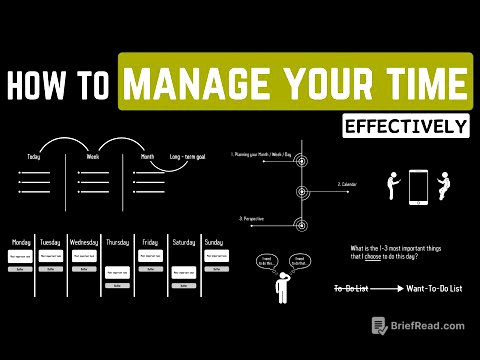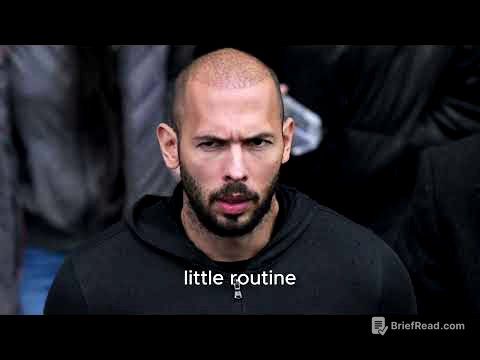TLDR;
This video explains the "blackbox effect" in learning, where the process of turning input (time and effort) into output (skill) is unclear, leading to inconsistent results and frustration. It provides three strategies to open the black box and accelerate learning: practicing with reflection, shifting from random to targeted practice, and constantly asking "why" to understand the underlying principles of the skill.
- The blackbox effect occurs when the process of converting effort into skill is unclear, leading to inconsistent performance.
- Strategy 1: Pair practice with reflection to identify gaps in understanding and accelerate learning.
- Strategy 2: Shift from random practice to targeted practice by forming hypotheses and testing them during practice.
- Strategy 3: Constantly ask "why" to understand the reasons behind instructions and troubleshoot problems more effectively.
Introduction to the Blackbox Effect [0:00]
The blackbox effect explains why many people struggle to learn new skills, feeling stressed and frustrated due to a lack of improvement. This effect, originating from engineering, describes situations where the process of converting input into output is unclear. In the context of learning, the input is time and effort, while the output is performance and competence. When learners don't understand how their effort translates into skill development, their performance becomes inconsistent, leading to demotivation and burnout.
Understanding the Blackbox in Skill Acquisition [0:41]
The black box in skill acquisition refers to the unknown processes that transform time and effort into competence. Complex skills have many factors within this black box, making it difficult to understand how to improve. When performance is inconsistent, people tend to increase their time and effort without addressing the underlying issues within the black box, perpetuating the cycle of frustration. Recognizing that the inability to improve quickly is due to a closed black box is the first step toward faster learning.
Strategy 1: Never Practice in Isolation [4:43]
To improve skill development, it's crucial to pair practice with reflection. The value of practice lies in the lessons learned from the experience. Dedicating time to critical reflection after each practice session helps identify gaps in understanding. Documenting these gaps makes them explicit and facilitates targeted improvement. Reflecting on experiences can significantly reduce the amount of practice needed, potentially by five to tenfold.
Strategy 2: Shift from Random to Targeted Practice [7:52]
Targeted practice involves forming a clear hypothesis about how a skill works and then testing that hypothesis during practice. Unlike random practice, where the reasons for doing things are unclear, targeted practice starts from within the black box. By being explicit about how you think the skill works, you can use practice sessions to test and refine your understanding. Each practice session becomes more targeted, allowing you to adjust variables and improve your understanding of the skill.
Strategy 3: Ask Why Constantly [12:03]
Challenging the instructions and guidelines of a new skill by constantly asking "why" is essential for building a working theory of how the skill functions. Understanding the reasons behind each step allows for more effective troubleshooting and self-adjustment when results don't meet expectations. Quick learners recognize the value of asking "why" and building a model of the skill, which translates to needing less practice and improving more rapidly. Asking "why" can also reveal hidden black boxes, such as personal habits that hinder effective practice.








![[Digimon Podcast] LiT Episode 68 - The Ugly Stick Goes DigiMental](https://wm-img.halpindev.com/p-briefread_c-10_b-10/urlb/aHR0cDovL2ltZy55b3V0dWJlLmNvbS92aS9hRDlVc0hOX29SYy9ocWRlZmF1bHQuanBn.jpg)
